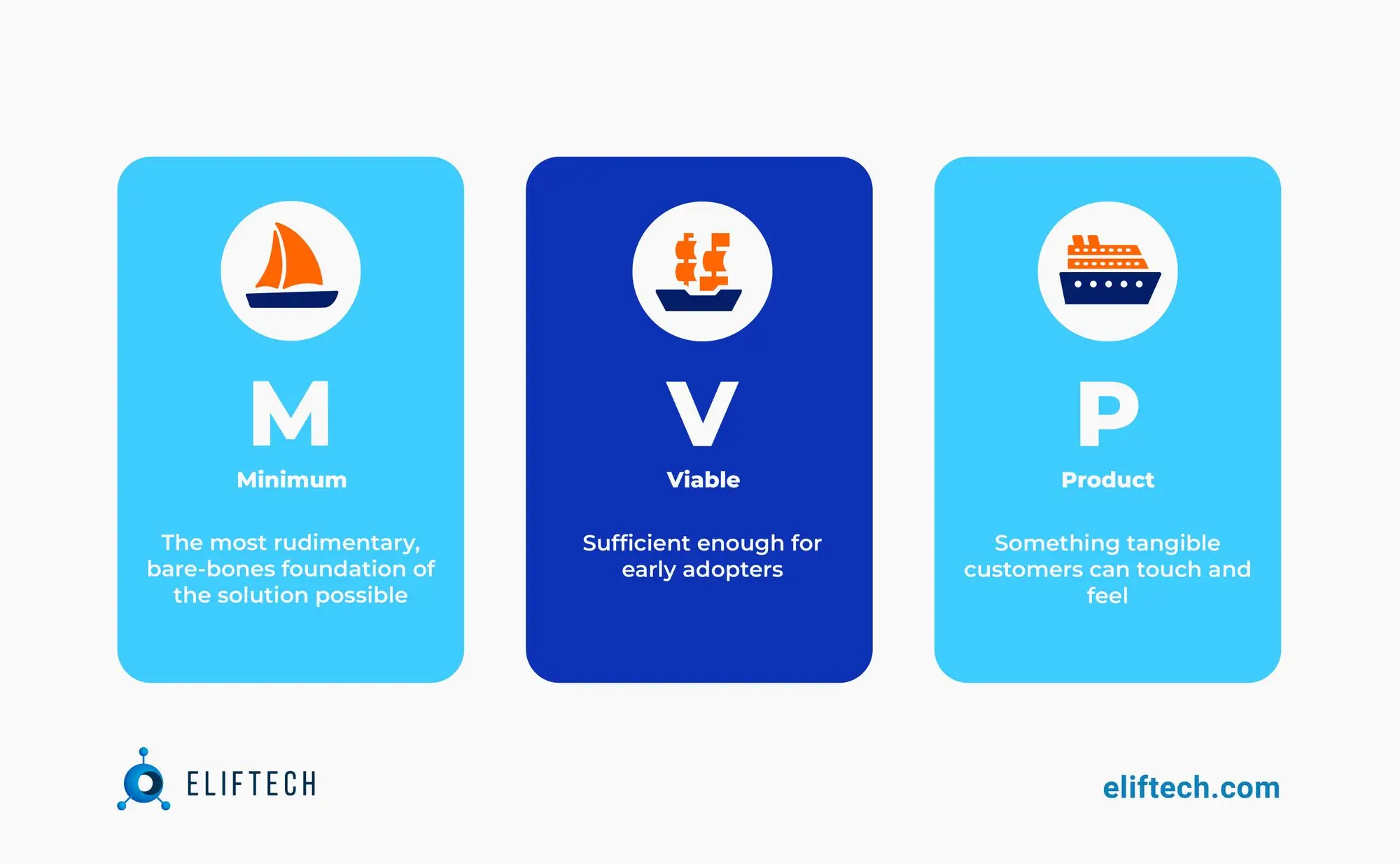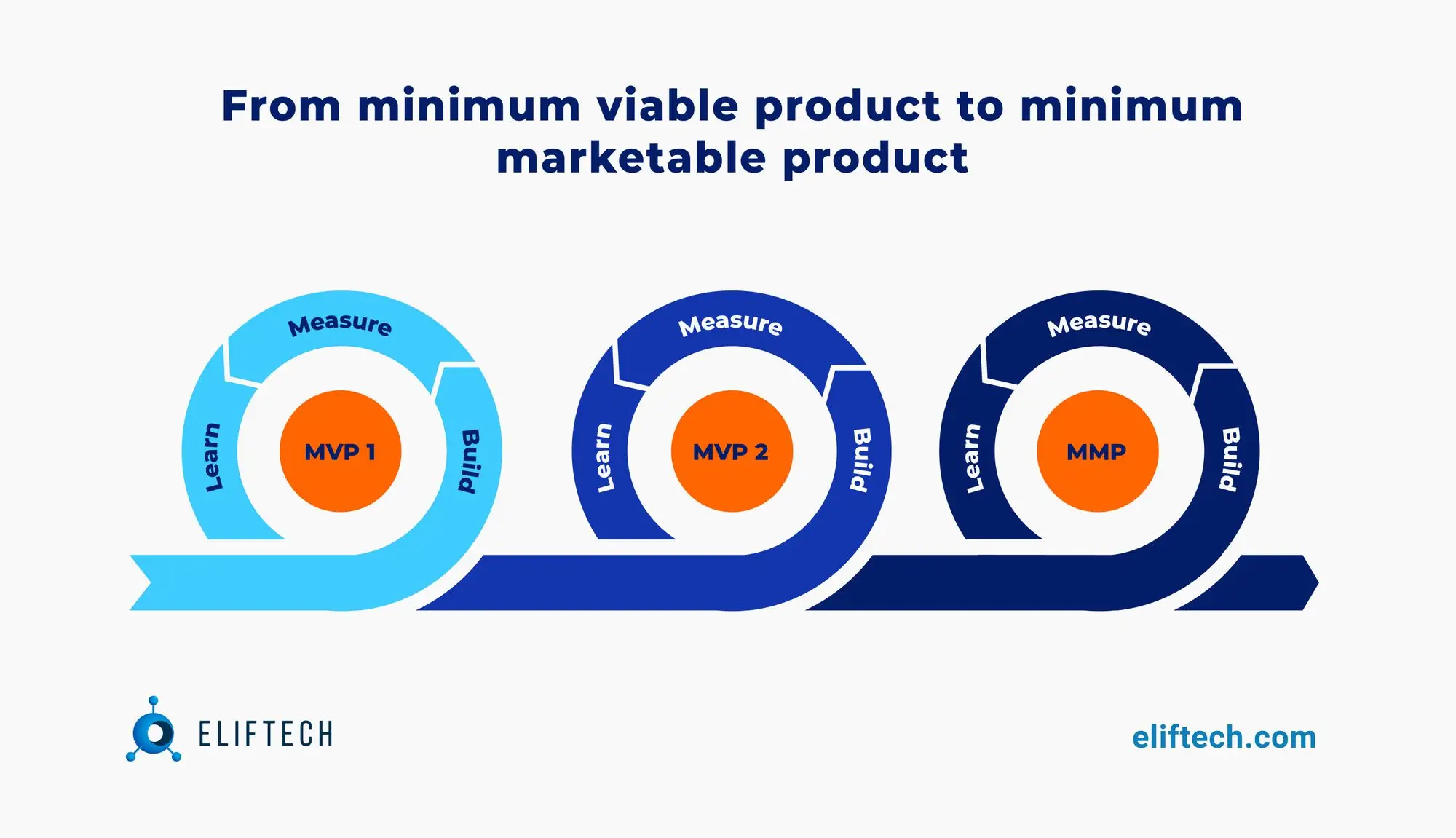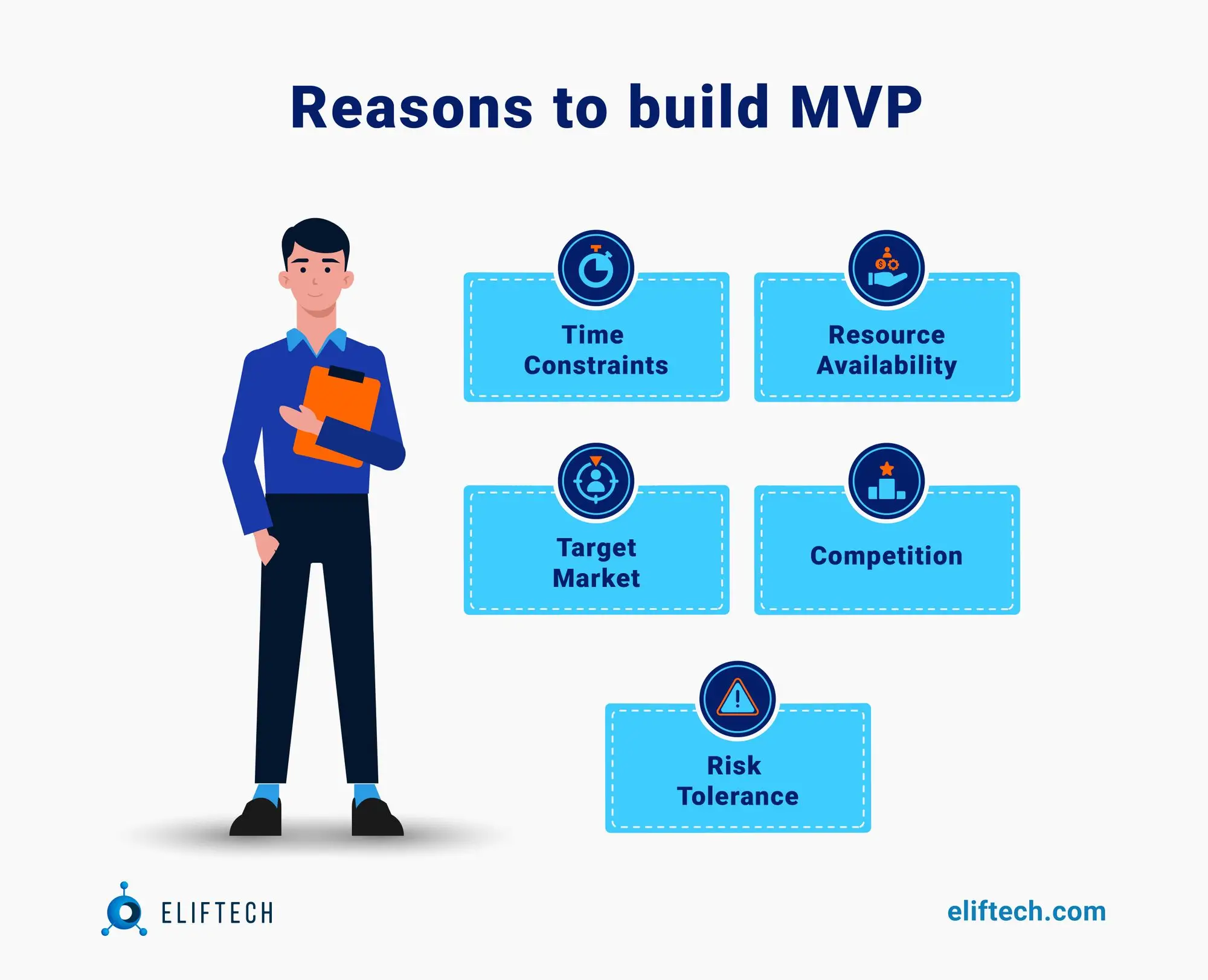Startup
MVP vs MMP: a Guide to Choosing the Right Product Strategy for Your Business

Choosing the right strategy in product development can mean the difference between success and failure. So, selecting the one that aligns with your business goals is crucial to your success.
Picture this: you have an innovative product idea but face the challenge of limited time, resources, and uncertainties. How can you overcome these hurdles and ensure your product hits the market? That’s where MVP and MMP come in, offering well-structured frameworks to validate your concept efficiently.
In this article, we delve into the concepts of MVP and MMP, uncover their key differences, and offer practical advice on when to employ each strategy. Whether you prefer the “build, measure, learn” MVP mantra or the market-driven MMP mindset, we aim to give you the information you need to route your product strategy in the right direction.
MVP vs MMP: Main Differences
A Minimum Viable Product (MVP) and a Minimal Marketable Product (MMP) are two dynamic approaches that have revolutionized how businesses create and launch products. But what is the difference between them?
An MVP is an early product version with basic functionality and a simple design, allowing you to test the product idea with minimal investment. The main idea behind an MVP is to validate your business idea and define which problems need to be solved in a way that makes users want to buy your product. The MVP is the basis upon which you can develop the MMP - an already iterated and improved version of the MVP, ready to become a sellable product.
Thus, an MMP is a development strategy focusing on delivering a marketable product with enough features and functionality users will want to buy. The main idea behind an MMP is to establish a market-ready product, providing value to users. We may also refer to MMP as the final version of your product (a combination of several MVPs) you came up with after testing your idea through several iterations during an MVP phase.
Let's summarize the core differences across several essential criteria for greater clarity.
Even though an MMP vs. MVP share the common goal of delivering value to customers, they differ in their approach and focus. While MVP excels in rapid validation and learning, MMP focuses on a more comprehensive solution that meets customer needs.
Unleashing the Power of MVP Phase

MVP's meaning in project management cannot be underestimated. Choosing the right approach before embarking on a business adventure can become a game-changer for your business. Did you know that at the forefront of priorities, developing and creating new products takes precedence for 57% of C-level managers? So, the power of the MVP phase is huge. Let’s review what MVP is in software, the main reasons why build an MVP, and what benefits it offers.
Decoding the MVP Approach
The MVP approach is a strategic starting point for companies looking to test the water and get product ideas validated quickly. By focusing on building a minimum, core version of the product, the MVP strategy enables businesses to test assumptions, acquire valuable user feedback, and iterate based on practical insights.
MVP in software development doesn’t imply having all the features, so you have room for change and improvement in the later development iterations. Instead, it only means you should have the features you want to test and understand whether they are worth implementation. So, the primary value of MVP development is the ability to go for multiple cycles of testing your idea at low risk and cost.
At ElifTech, the MVP development process looks as follows: we schedule a call with our clients to understand their product vision, goals, and target audience to build a minimal, functional product with essential features. Our team get to prototyping and creating simple product design to test on users and gather feedback to refine the product. This feedback-driven approach minimizes risk and allows us to create market-ready products that can be scaled up based on validated ideas and changing needs.
How MVP Accelerates Time-to-Market
One of the significant advantages of an MVP in software development is reducing product time-to-market. Since MVPs don’t require building complex functionality and advanced UI/UX design and thus less time for development is required.
By prioritizing developing essential features, you can ensure a faster MVP launch, test your business faster than competitors, and gain user feedback early on. So, early market exposure helps you improve your product roadmap, identify and fix key pain points, and decide what nice-to-have features to develop further.
On average, it takes 3-4 months to build MVP capable of attracting early adopters and actual customers.
Maximum Impact, Minimum Effort
The MVP in project management enables you to achieve maximum impact with minimum effort. Instead of wasting time and resources on building a fully-featured product from the start, you can focus on delivering a streamlined solution that solves a core problem. Doing so allows you to validate your assumptions, gain early trust, and optimize your development efforts based on market demand.
Useful info: While the MVP strategy places a strong emphasis on speed and validation, it is important to recognize that it may lead to a product that lacks certain functionalities or features a more simplified user interface.This trade-off is intentional, as gathering feedback and validating your product-market fit are the main objectives of the MVP phase.
Staying Ahead of the Curve with MMP

In contrast with MVP, MMP offers a different perspective on product strategy. By embracing the MMP approach, businesses can optimize their product strategy, enhance customer satisfaction, and establish a strong market presence. Let’s find out how.
Unveiling the Boundless Scope of MMP
MMP meaning in marketing, offers a broader approach by going beyond the core to deliver a more comprehensive solution. With MMP, businesses aim to provide a market-ready product that meets a broader range of user needs and has meaningful features users will want to buy.
So, by investing in the proper feature set, prioritizing quality, and conducting a thorough market analysis, companies can unlock the potential of their product and position themselves as leaders in their industry.
Designing MMP for Market Domination
Customer satisfaction and market demand are given top priority in the MMP strategy. It involves thorough market research and analysis to identify client pain points, understand what competitors offer, and adjust the product roadmap accordingly.
The MMP strategy seeks to satisfy user expectations and ensure a compelling value proposition that resonates with the target market. In other words, with MMP, the focus is on prioritizing key features that will effectively sell your product to customers and establish market dominance.
The Competitive Edge of MMP
Gaining a competitive edge is one of the most significant benefits of using an MMP strategy. Businesses can stand out and reach more potential customers by providing a more feature-rich and comprehensive solution. This strategic positioning allows for greater market penetration, increased customer loyalty, and sustained business growth.
Useful info: Compared to MVP, the MMP approach provides a more complete and comprehensive product but requires careful planning, resource allocation, and longer development time. It focuses on delivering a market-ready product that meets or exceeds customer expectations.
MVP vs. MMP: How to Choose the Right Product Strategy?

In this section, we’ll look at the practical aspects of choosing between MMP vs. MVP, allowing you to make an informed decision based on your business needs.
But before that, you should first remember that choosing the right product strategy for your business depends on your stage in the product development life cycle. While MVP is an excellent option for companies with raw product ideas and limited budgets, the MMP approach is more suited to established markets and companies with an evidence-based understanding of their target users and preferences.
However, while both MVP/MMP have their merits, evaluating the specific circumstances and goals you’re aiming to achieve is essential. So, we recommend the below factors to consider before choosing between MVP and MMP:
Time constraints. Taking into account the urgency and timeline of your project, you can better understand the way to go. MVP may be the ideal choice if speed and early market validation are a priority. But, if you have more time to create a comprehensive solution and want to establish a broader market presence, MMP can be a better choice.
Resource availability. When it comes to developing a new product, the next factor to keep in mind is the amount of investment resources you have. Budget, talent, and technical capabilities are all factors requiring prior consideration. For instance, MVP often requires minimal resources, allowing you to test the waters with limited investment. In contrast, MMP may require more resources to develop a feature-rich product and scale for market demand.
Target market. Analyzing your target market and its needs is crucial since MVP and MMP differ here. MVP is ideal for quickly identifying and solving a fundamental problem, while MMP focuses on broader user needs. So, think about what fits your market strategy best: capturing a niche market with a streamlined solution or reaching a wider audience with a comprehensive product.
Competition. By studying the competition and market offerings, you can quickly determine if an early MVP launch can help you gain an edge and gain a foothold in the market. Conversely, if competitors already offer feature-rich products, MMP can help you stand out and outperform their offerings.
Risk tolerance. An MVP supports a fail-fast mentality that allows you to learn and adapt quickly. MMP, on the other hand, reduces the risk of launching an incomplete product but requires more careful planning and market research. That’s why it’s also crucial to evaluate your risk tolerance and appetite for iteration.
By carefully considering these factors, you can decide which MVP or MMP best fits your business goals, resources, and market dynamics.
While there is no one-size-fits-all approach, and the choice varies depending on the unique circumstances of your business, our team is ready to help you choose wisely. Learn more about our software product development services!
Combining MVP & MMP Strategies for Success
Although MVP and MMP are often presented as separate product strategies, it is essential to note that they can also complement each other. By adopting a strategic blend of MVP and MMP, you can confidently navigate the product development journey and double your chances of achieving long-term success in your industry.
How exactly? The key to combining MVP and MMP lies in a phased approach. By going into the MVP phase first, you’ll be able to quickly validate your core product concept and gather valuable user feedback. This approach will also allow you to test assumptions, identify pain points, and improve your product based on accurate data.
The following natural approach in agile software development is to create and run an MMP. So, once you’ve validated your product and established a strong foundation, you can transition into the MMP phase. At this point, you can scale your feature set to meet broader user needs, conduct in-depth market research, and fine-tune your product based on customer feedback. The insights gained during the MVP phase will help you decide, ensuring you prioritize features that match market demand and provide a competitive advantage.
By combining MVP and MMP, you can provide a more complete and competitive product while leveraging the early-stage speed and agility of MVP and the market-driven methodology of MMP. This hybrid strategy allows for continual development and iteration, ensuring your product remains relevant and impactful in an ever-changing market.
Conclusion
The choice between MVP and MMP can affect how your company handles the changing realm of product planning. Minimum Viable Product focuses more on speed, validation, and early market entry, while Minimal Marketable Product has a more thorough and market-focused strategy. Thus, it’s vital to remember that no one approach fits all situations.
So, whether you choose an MVP, an MMP, or a mixed approach, evaluating your unique circumstances, goals, and available resources is essential before selecting.
Now, armed with the knowledge and insights from this guide, it’s time to take action. Once you’ve chosen your strategy, our team can help you bring your idea to life. Get the most of our expertise, business knowledge, and creativity to develop best-in-class products from scratch. Reach out to ElifTech experts.
